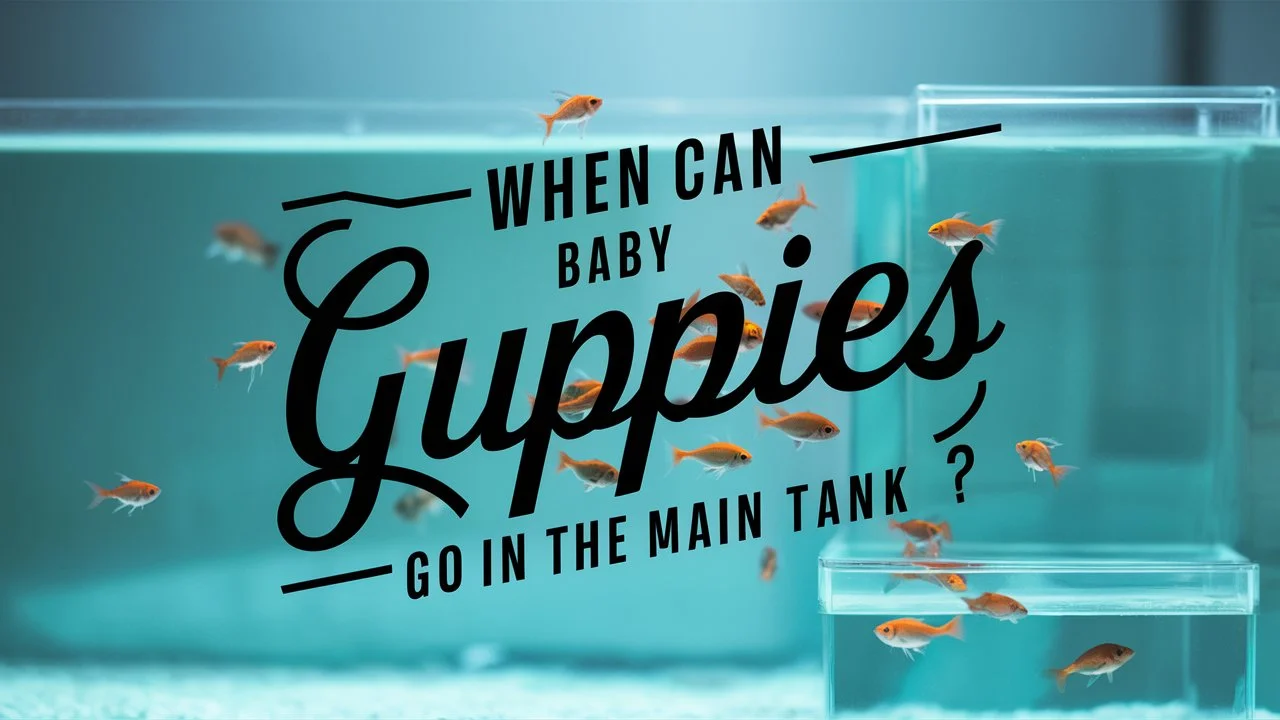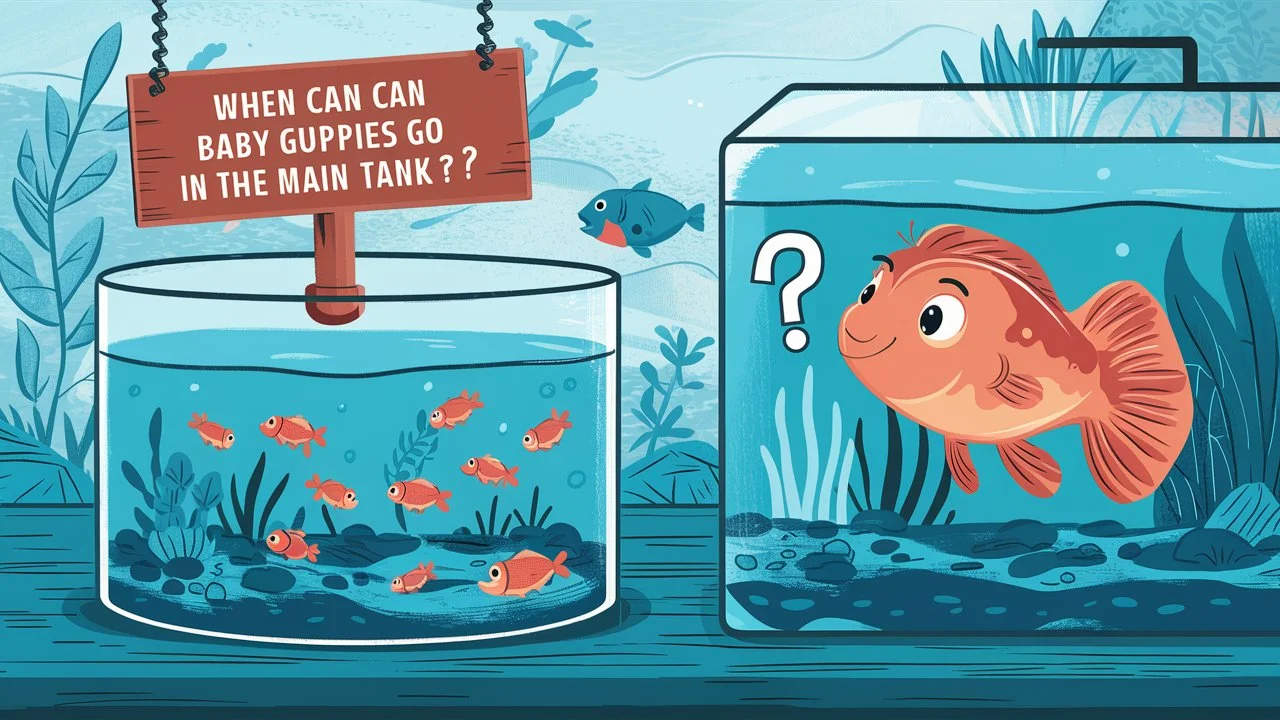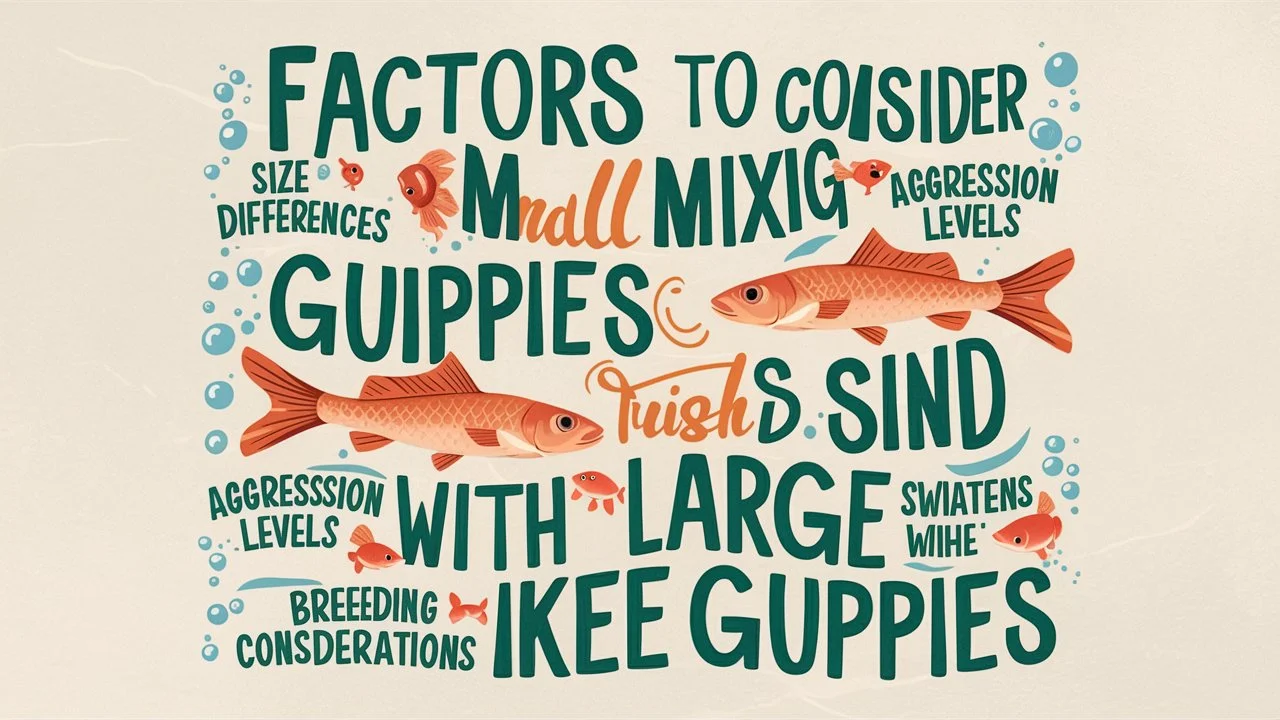When small guppies are born in your tank, it is a very happy moment to watch. They are small, colorful and very cute. But the question that often comes to mind is when can they be kept in a big tank with big fish? If you rush, they may become food for larger fish, and if you delay, they may run out of room to grow. So, let’s know when is the right time.
Young guppies can be moved to a larger tank when they are about 1 inch (2.5 cm) long and 4 to 6 weeks old. In addition, it is important that they are completely healthy and have hiding places in a large tank. Introduce them gradually to the larger tank so they can easily adjust to the new environment.
When Can Baby Guppies Go in the Main Tank?
So, you’ve got a batch of baby guppies and they’re the cutest little swimmers ever! But now comes the big question: “When can I move them to the main tank with the adult guppies?” It’s a common concern for anyone raising guppies, and I’m here to help you figure it out.
Related reading: How to Take Care of Guppy Fry

Why Can’t Baby Guppies Go into the Main Tank Right Away?
Baby guppies, also known as fry, are incredibly tiny when they’re born. They usually measure less than half an inch long, and they’re pretty defenseless. Adult guppies—and other fish in the tank—might see these little guys as snacks rather than family members. This is why it’s crucial not to rush them into the main tank too soon.
The fry also need time to develop their swimming skills and learn how to find food on their own. In a big tank with strong water currents and bigger fish, they could struggle to survive if they’re introduced too early.
How Long Should I Wait Before Moving Them?
Patience is key here. Typically, you should wait until your baby guppies are around 6 to 8 weeks old before moving them to the main tank. By this age, they should have grown to about an inch long, which is a safer size for living with adults.
During these 6 to 8 weeks, keep an eye on their growth and behavior. You want to make sure they’re healthy, swimming confidently, and eating well. If they’re still small or seem timid, it might be best to wait a little longer.
How to Prepare the Main Tank for Baby Guppies
Before moving your baby guppies to the main tank, it’s important to make sure the environment is just right. Here are a few steps to get the tank ready:
- Provide Plenty of Hiding Spots: Baby guppies are still learning the ropes of life, and they might need a place to hide if they feel threatened. Adding live or artificial plants, rocks, or small caves to the tank gives them places to retreat if they need to.
- Check Water Quality: Good water quality is essential for all fish, especially for younger ones. Make sure the tank’s water parameters—like pH, ammonia, and nitrite levels—are stable and within the safe range. The water temperature should be between 75-82°F (24-28°C), which is ideal for guppies.
- Choose Gentle Tank Mates: Before introducing the fry, assess the temperament of the other fish in the tank. Peaceful, non-aggressive fish are the best companions for guppies. If there are any aggressive fish, you might want to consider separating them before adding the fry.
How to Safely Move Your Baby Guppies?
When the big day arrives, and it’s time to move the baby guppies, you’ll want to do it as gently as possible to reduce stress on the fish. Here’s how:
- Use a Small Net: Carefully scoop up the baby guppies using a small, soft net. Try to catch them one at a time to avoid overcrowding in the net.
- Acclimate Them to the New Water: If the water conditions in the main tank are different from where the fry have been living, you’ll need to acclimate them. Place the fry in a small container with some of their old water, then slowly add water from the main tank over 15-30 minutes. This helps them adjust to the new water chemistry and temperature.
- Introduce Them to the Main Tank: Once they’ve acclimated, gently release the baby guppies into the main tank. Watch how they react to their new surroundings and how the other fish respond to them.
What to Expect After the Move?
After moving the baby guppies, it’s important to monitor them closely for the first few days. Here’s what to look for:
- Behavior: The fry might be shy at first, but they should gradually start exploring their new home. If they seem overly stressed or are hiding constantly, it could be a sign that they’re not ready for the main tank.
- Feeding: Make sure the baby guppies are eating well. You might need to crush their food into smaller pieces to make it easier for them to eat. Observe if they’re getting their fair share of food without being outcompeted by the adults.
- Interaction with Other Fish: Watch how the adult guppies and other fish in the tank interact with the newcomers. If there’s any aggression, you might need to provide more hiding spots or, in some cases, remove the fry for their safety.
Factors to consider before mixing small guppies with large guppies
When you have small guppies and are planning to keep them in a large tank with larger fish, there are some important factors to consider. By keeping these factors in mind, you can protect the little fish and ensure their healthy growth.
1. Consider size and age
Younger guppies can be kept with larger fish when they are at least 1 inch (2.5 cm) long and 4 to 6 weeks old. Before reaching this size and age, they are fragile and can become easy prey for larger fish. If small fish are too small, larger fish may see them as food, and the risk is high.
2. Understand the behavior of large fish
Every fish has a different behavior, and the behavior of large guppies is especially important when you want to keep smaller fish with them. Some large fish do not tolerate new fish in their territory and may attack them. You need to observe the behavior of large fish to know how they will behave with smaller fish. If larger fish are aggressive, it is best to keep them separate.
3. Provide hiding places in the tank
It is important to provide safe spaces for small guppies if they are living with larger fish. The tank should have plants, rocks, or other decorations where small fish can hide. It provides comfort and protection to small fishes and protects them from attacks by larger fishes.
4. Take care of food supply
Larger fish often overeat, and smaller fish may experience food shortages. Make sure that adequate food is available even for small fish. You have to see if the small fish are getting food or not, and you can feed them separately if needed.
5. Take care of water conditions
Water conditions such as temperature, pH level, and filtration are very important to be stable. Small guppies are more sensitive to any change in water conditions. If the water condition changes suddenly, it can adversely affect the health of small fish. So constantly check the water conditions and try to keep them stable.
6. Method of introduction
Smaller guppy fish should be introduced gradually into the tank with larger fish. A good method is to first place them in a separate container floating in a larger tank. This allows the small fish to get used to the new environment and is protected from the larger fish. When you see that the smaller fish are comfortable and the larger fish are behaving well, you can gradually release them into the tank.
How to put baby guppies in a large tank?
When your guppies hatch, transferring them to a larger tank is an important step. Carrying out this process correctly not only increases the chances of survival of small fish, but also allows them to live happily in a larger tank. Here we will see in detail how you can put baby guppy fish in a large tank.
1. Choosing the right time
First, you need to make sure that the small guppies are ready to move into the larger tank. Generally, when they are at least 1 inch (2.5 cm) long and are 4 to 6 weeks old, you can consider moving them to a larger tank. If you move them too quickly, larger fish may see them as food.
2. Prepare a large tank
In order for baby fish to feel safe in a large tank, it is important to provide hiding places. For this you can place different plants, stones, or other decorations in the tank. These give the small fish a chance to escape from the bigger fish and give them a place to rest.
3. Maintain consistent water conditions
Before transferring the small guppies to the larger tank, you should equalize the water conditions in both tanks. The water temperature, pH level, and other chemical conditions should be the same in both tanks so that the small fish can easily adjust to the new environment.
4. Introduce slowly
Smaller fish must be introduced gradually to a larger tank. You can use a breeder box or a small container that you leave floating in the larger tank. This will allow the smaller fish to get used to the new water conditions and living with the larger fish. When you see that the small fish are comfortable, release them freely into the tank.
5. Observe the behavior of large fish
When you release small fish in a large tank, you should monitor the behavior of the larger fish. Some larger fish do not tolerate new, smaller fish in their territory and may attack them. If you see such a situation, immediately separate the small fish.
6. Manage the diet
While living with larger fish, smaller fish must receive adequate food. Large fish often eat more food, so you should make sure that food is available for smaller fish and that they do not starve. You can place the food in different places so that all the fish can get the food.
7. Continue to care
Even after transferring baby guppies to a larger tank, you will need to take care of them constantly. Monitor their health daily, feed them on time, and keep checking water conditions. If you notice any unusual symptoms, take immediate action.
Conclusion:
Moving your baby guppies to the main tank is an exciting milestone! With the right preparation and a little patience, you can make sure they have a smooth transition and thrive in their new environment. Just remember to wait until they’re around 6 to 8 weeks old, prepare the main tank carefully, and keep a close eye on them after the move.


1 thought on “When Can Baby Guppies Go in the Main Tank?”